EN
- DE
- FR
- IT

Down and feathers are a miracle of nature and a high-quality natural product. Thanks to its millions of air chambers, down ensures a pleasant environment for sleep. Despite advances in technology, its insulating effects remain unparalleled. With its excellent properties, it performs valuable functions such as filling material for bedding, down jackets or sleeping bags.
As a perfect complement to down, feathers are ideal as a filling material for pillows, where they are pleasantly soft against the head but also offer the desired stability for the neck.

Feathers are the outer plumage of waterfowl, i.e. ducks and geese. Under this plumage, which protects against moisture, the heat-insulating fluffy down grows.
Down consists of a tiny, fine core and branches out into all directions in a star shape. The fluffy filaments of the down have no hooks and are therefore flexible in all directions.
Feathers have a completely different structure. They consist of an elastic keel and firm, fine feather branches which fit smoothly into each other by means of fine hooks. Feathers are two-dimensional and slightly bent.
Down, on the other hand, is a three-dimensional, round and fluffy structure without a keel.

Down and feathers are 100% natural materials. They are washable, suitable for allergy sufferers and, with good care, provide us with many years of valuable service with relaxed and restful nights.
People have been taking advantage of the unique properties of this natural product for thousands of years. The ancient Romans appreciated the qualities of this useful by-product of feathered animal rearing and filled their bedding with it.
This has remained unchanged to this day. Despite the latest scientific findings, the outstanding properties of down have never been matched by synthetic materials.

The declaration of bedding filled with down and feathers is standardised. According to the European standard SN/EU 12934, a down content of 100% may be declared if the down content (compared to the feathers) is at least 90.5% (percentage by weight). This also includes immature down and down feathers. (max. 5% so-called "down fluff").
In the Swiss standard (VSB standard 2.0), however, the down fluff may not be counted as down flakes. After consideration of the test tolerance, the content of down flakes for a 100% filling is 91%, which is above the European standard. This puts the Swiss standard among the strictest worldwide.

A clear product description describes the down and feather category and the variety designation.
For example, "90% new, pure goose down" means that the filling consists of 90% down and 10% feathers by weight. Weight percentages are not volume percentages. Since down is lighter than feathers, the same amount by weight results in a larger filling volume for the down.
The term "new" means that the duvet contains down and feathers used for the first time, i.e. no recycled down and feathers (no so-called "couchée" goods).
"Pure" means that the proportion of the other animal species (e.g. duck) must not exceed 10%.

Down grows as fine flakes on the breast of geese and ducks. Unlike feathers, down has no keel and is therefore a peerlessly light and airy filling material for duvets.
Down is the undercoating of waterfowl (geese and ducks) and consists of light, fluffy filaments growing from a central quill point, thereby creating a three-dimensional structure which traps air and provides insulation.
Thanks to its millions of air chambers, it can store a lot of heat-insulating air and provide an excellent sleeping environment.
As down is hydrophilic, it not only insulates against the cold but also absorbs a lot of moisture, which it releases back into the environment.

Down is one of the best and most popular filling materials for bedding, clothing and sleeping bags. Its insulating properties are established worldwide. The effect of the fine ramifications of down with its millions of air chambers remains unique.
The outstanding properties of down:
There is no better air conditioning system! Down duvets absorb the body moisture released during sleep and releases it again when they are aired in the morning. They keep the temperature in the bed constant without accumulating heat.

Down looks like fine snowflakes. It has high elasticity and is very light. Due to its three-dimensional structure with silky soft down fibres, it can trap a lot of air. As air is a very good insulator, the heat given off by the body is well retained by the down.
Down therefore protects against the cold and maintains a comfortable sleeping temperature.
Since at duvetsuisse.com we only use new, high-quality down with large down clusters and high fill power, we are able to achieve a high thermal performance with small filling weights, while at the same time providing excellent breathability and good hydrophilicity (moisture transport).

The quality and warmth of a duvet is not only determined by the percentage of down, but also by its size and filling power.
Visually, there is little difference between down from geese or from ducks. The difference is due to the different sizes of the adult, mature down. Since geese are larger than ducks, their down is also larger.
Down with large flakes insulates better than down with small flakes. It is therefore more expensive but offers better sleeping comfort and has a longer life span.
However, if it is the same size, there is no difference in quality between goose and duck down. High-quality duck down is in any case better than lower-quality goose down.

The colour of down and feathers ranges from very white to almost black. Some common names for darker down and feathers are "silver" and "grey".
Colour does not affect quality, including warmth, fill power and insulating properties. In fact, some of the best down is only available in a darker colour. However, most people still prefer white fill because of the fact that it does not show through a light-coloured duvet cover.
As down and feathers are a natural product, it is always possible for individual, slightly darker down get lost in white duvet fillings. These have the same quality as the rest of the (white) filling but stand out in the overall white environment.
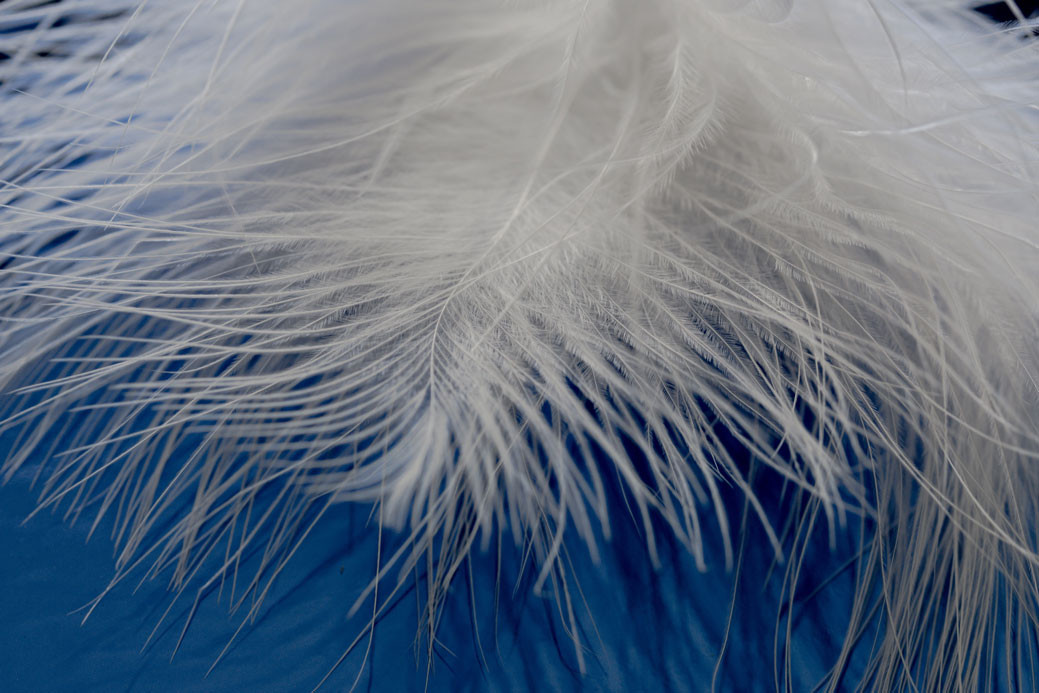
Yes, down protects waterfowl from cold and wetness and keeps the animal's skin dry. This would not work if it were not highly breathable.
The word "down" has its origins in Iceland. The down feathers of the eider duck, which lives in Iceland, are used as a nest for its eggs. The ducks depend on their breathable down to survive in arctic temperatures.
These characteristics are used by us humans. The ideal situation is when the sleeping person is nice and warm yet does not sweat and no moisture collects under the duvet. Down is perfect for this purpose. It absorbs the moisture and releases it into the environment.

Despite advances in technology, it has not yet been possible to develop a material that matches the properties of down and feathers with the same quality and is completely biodegradable.
On the compost heap, down and feathers transform into natural fertilizer within two to six months. Pure nature, without any chemicals.
In contrast, polyester (PES, PET) is a plastic (chemical fibre) and consists mainly of non-renewable raw materials such as crude oil and natural gas.
In addition, it takes about 200 to 400 years for a synthetic material such as polyester to completely biodegrade.
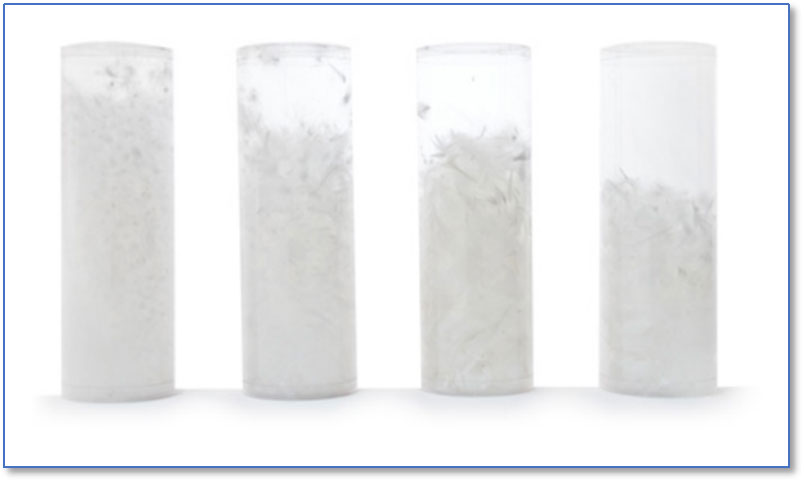
Fill power is an important quality feature of down. It describes the down’s ability to recover its original volume after compression.
This value is expressed in "cuin" (cubic inches) and indicates the volume (loft) to which an ounce (~ 28 grams) of down expands after compression.
The higher the filling power, the more air can be trapped by a certain weight of down. The result is that it has a greater insulating capacity. The filling power ranges from approx. 300 in³/oz (resp. 175 cm³/g, resp. 75 mm/30g for feathers to approx. 900 in³/oz (resp. 520 cm³/g, resp. 225 mm/30g) for the highest quality down.

We only use down with a fill power of between 675 and 850 cuin., or between 170mm/30g and 220 mm/30g.
Our simple classification system defines not only the size of the down used and its quality, but also its fill power through our quality ratings (Premium, Top, Standard and Basic).
For our "Basic" and "Standard" ranges, down with a very high fill power is used from 170 mm/30g and 675 cuin respectively.
For the "Top" range, we only use a very high fill power from 180 mm/30g, or 725 cuin. For our "Premium" quality we only use down with an excellent fill power from 200 mm/30g, or 800 cuin.

The size of the down, together with its fill power, is its most important quality feature. Large flakes of down have more volume and are also more durable. Adult geese and ducks supply the best quality down.
As the animals are mainly bred for their meat, which should be as tender as possible, they are often slaughtered as young animals. The down is then still small and of low quality. Similarly, duck down is also smaller than that of geese.
That is why we at duvetsuisse.com only use down and feathers from adult animals. These have the best insulating properties due to their maturity.
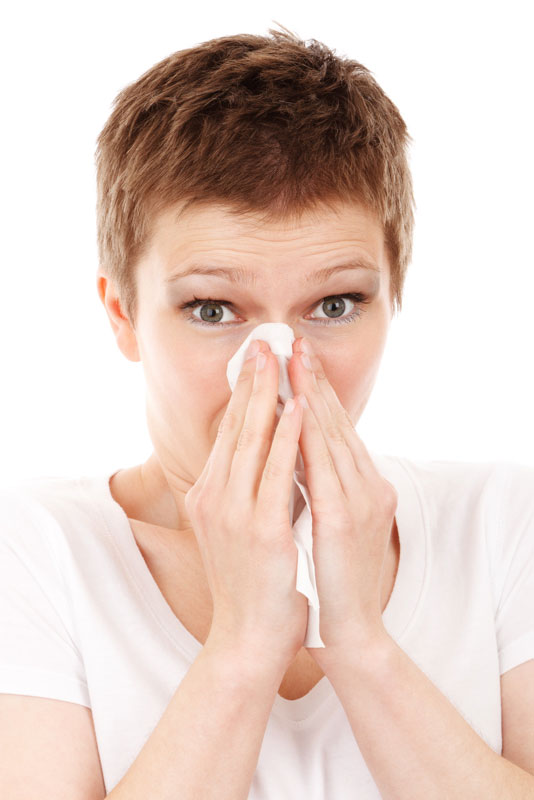
According to scientific studies, down is also suitable for people who suffer from an allergy to domestic dust.
This is confirmed by Professor Dr. Karl-Christian Bergmann, head of the pneumological-allergological outpatient clinic in the Allergy-Centrum-Charité in Berlin:
"From a medical point of view, down is harmless for people who suffer from allergies. Mites are much more common in mattresses than in any other place. There are far fewer mites in quilts. In addition, we have found in tests that there are significantly fewer mites in feather pillows than in the foam material of other pillows". (Interview from 5/2013 with Allianz pro Daune).

The fabrics of our duvets and pillows are so tightly woven that no house dust mites can penetrate (NOMITE®).
In addition, down duvets ensure rapid heat build-up when you fall asleep and just as rapid moisture release when airing in the morning.
The temperatures that are vital for mites are thus quickly exceeded, and the ideal humidity level for them is quickly reduced. These fluctuations are not at all comfortable for the microscopically small creatures.
Accordingly, allergy sufferers have been shown to suffer less from the symptoms of house dust mite allergy if they sleep under a down-filled duvet instead of a synthetic one
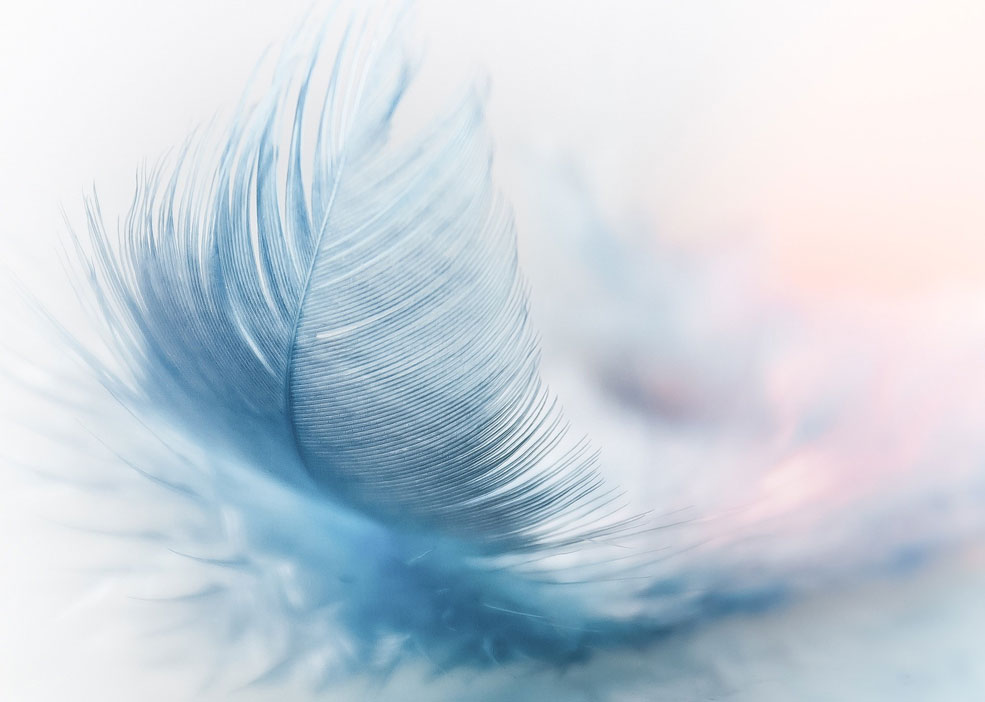
Feathers are the main outer protection of the animal’s body. Feathers are a separate species and have a completely different structure to down. Feathers are flat and two-dimensional and have an elongated, continuous and curved keel, from which soft hairy plumage twists off to both sides. The keel gives the feather its elasticity, which in a pillow has a decisive supporting function.
The quality of the feathers increases with the age of the animals. That is why we only use feathers from adult mother animals for our pillows.


No. Down is something completely different to feathers or downy feathers. The feather has an extended and curved keel. It gives the feather its shape and stability, but thanks to its enormous elasticity it is also responsible for its cushioning effect.
Down, on the other hand, has no keel and presents a completely different structure. It is a very light and fine flake of tiny, tightly fitted fluff with many branches. This enables it to store a lot of heat-insulating air. From its core grow raylike, silky soft down bones with the finest fibres. Their shape resembles snowflakes or flowers.
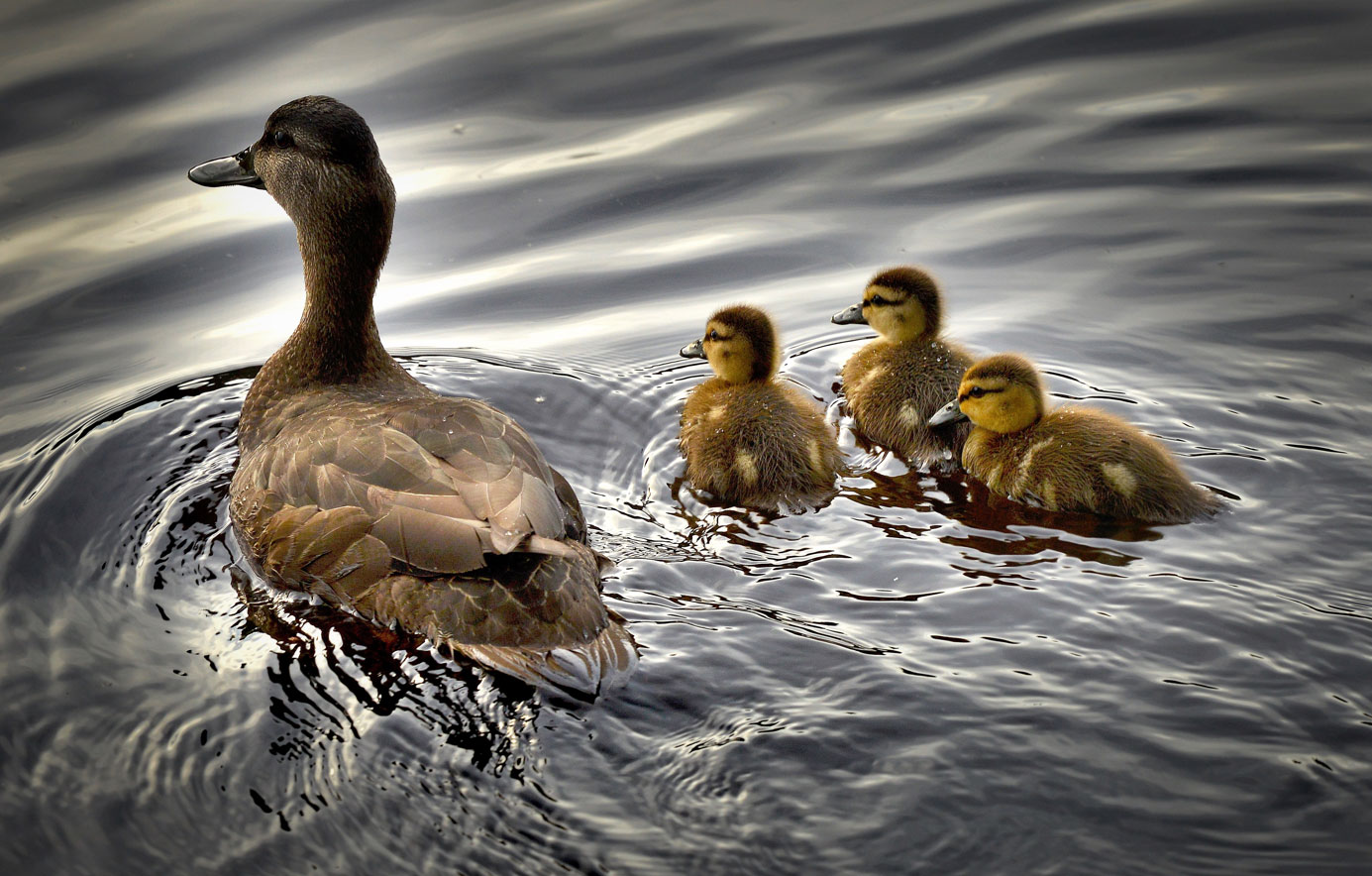

As a perfect complement to down (for duvets), feathers are ideal as filling material for pillows as they provide a pleasantly soft feathering of the head, but also offer the desired stability in the neck.
The advantages of feathers are:
- Enormous elasticity
- Durability
- High breathability
- Lightweight
- Biodegradable